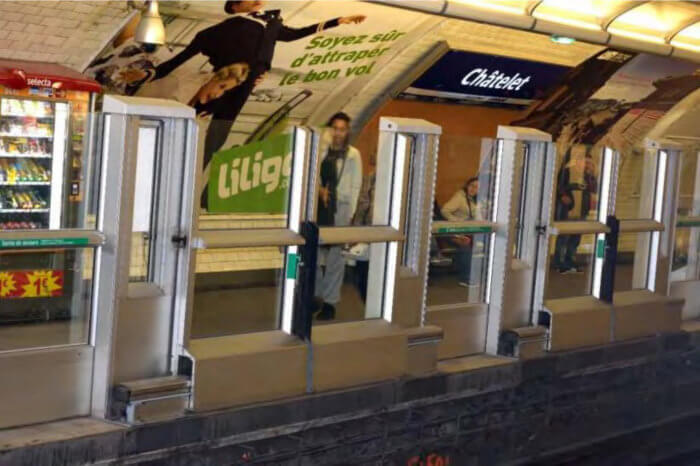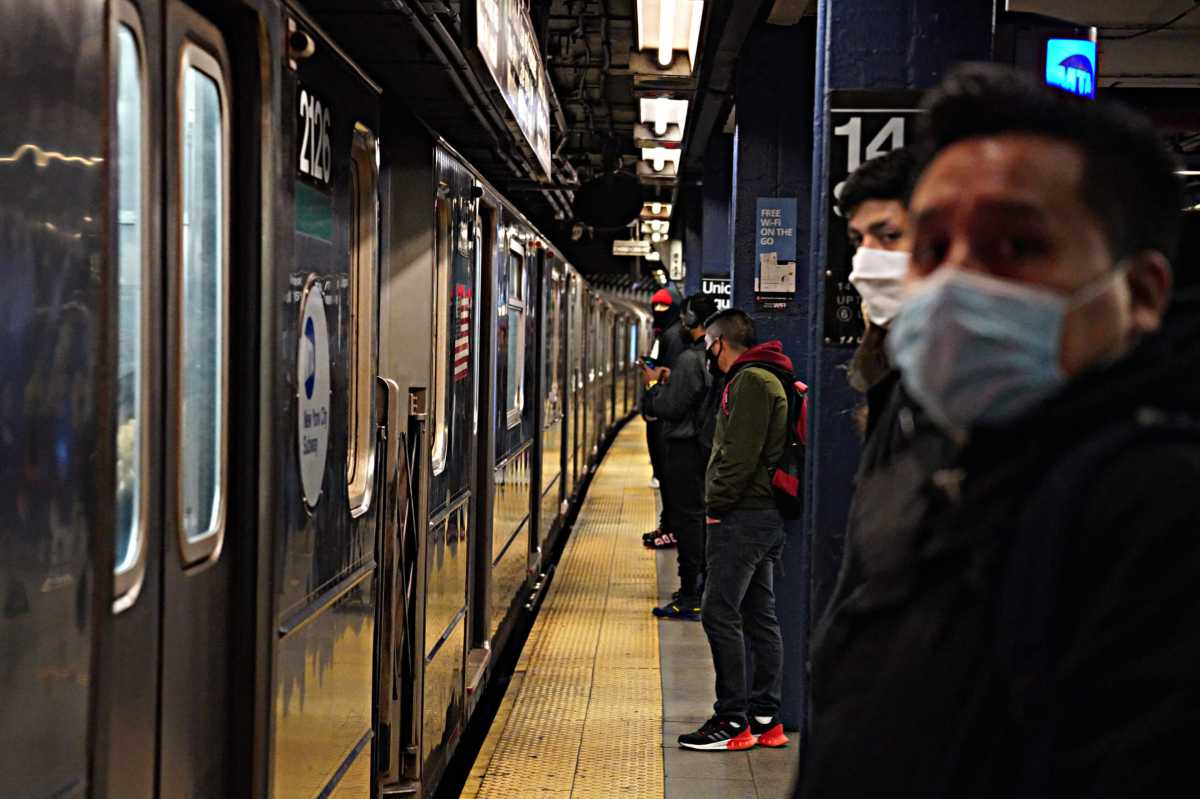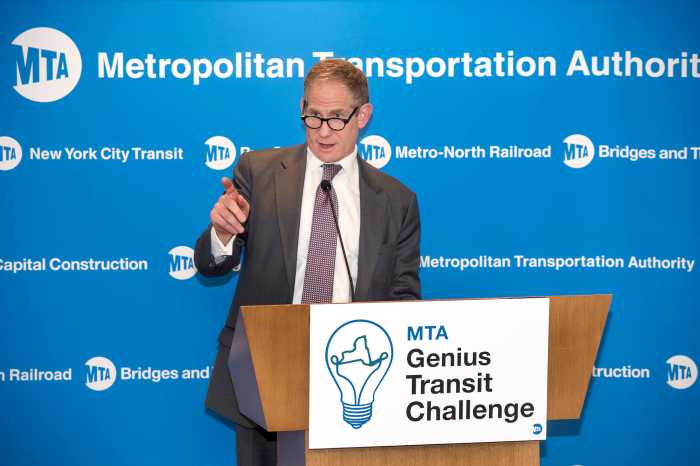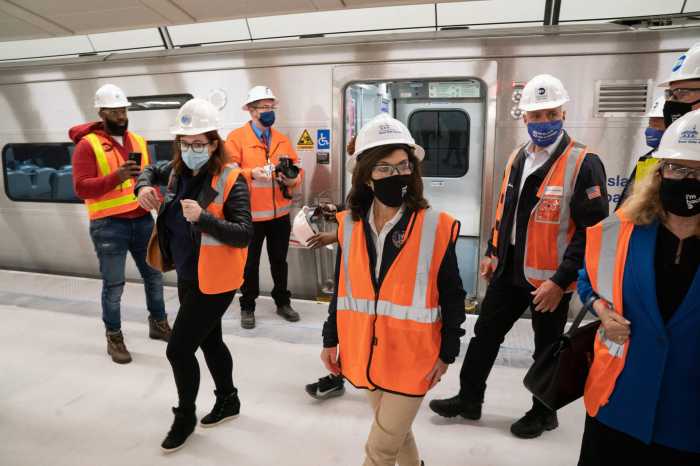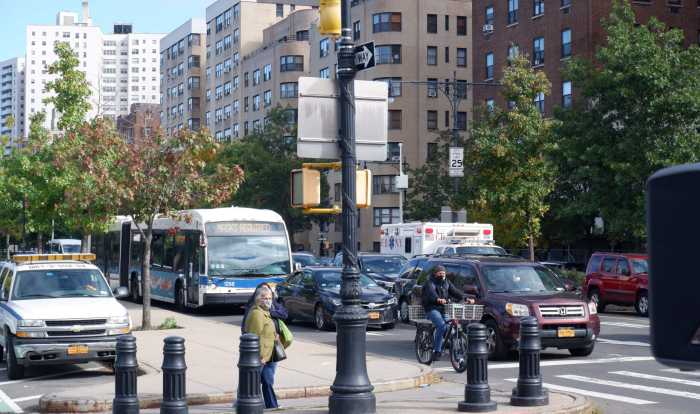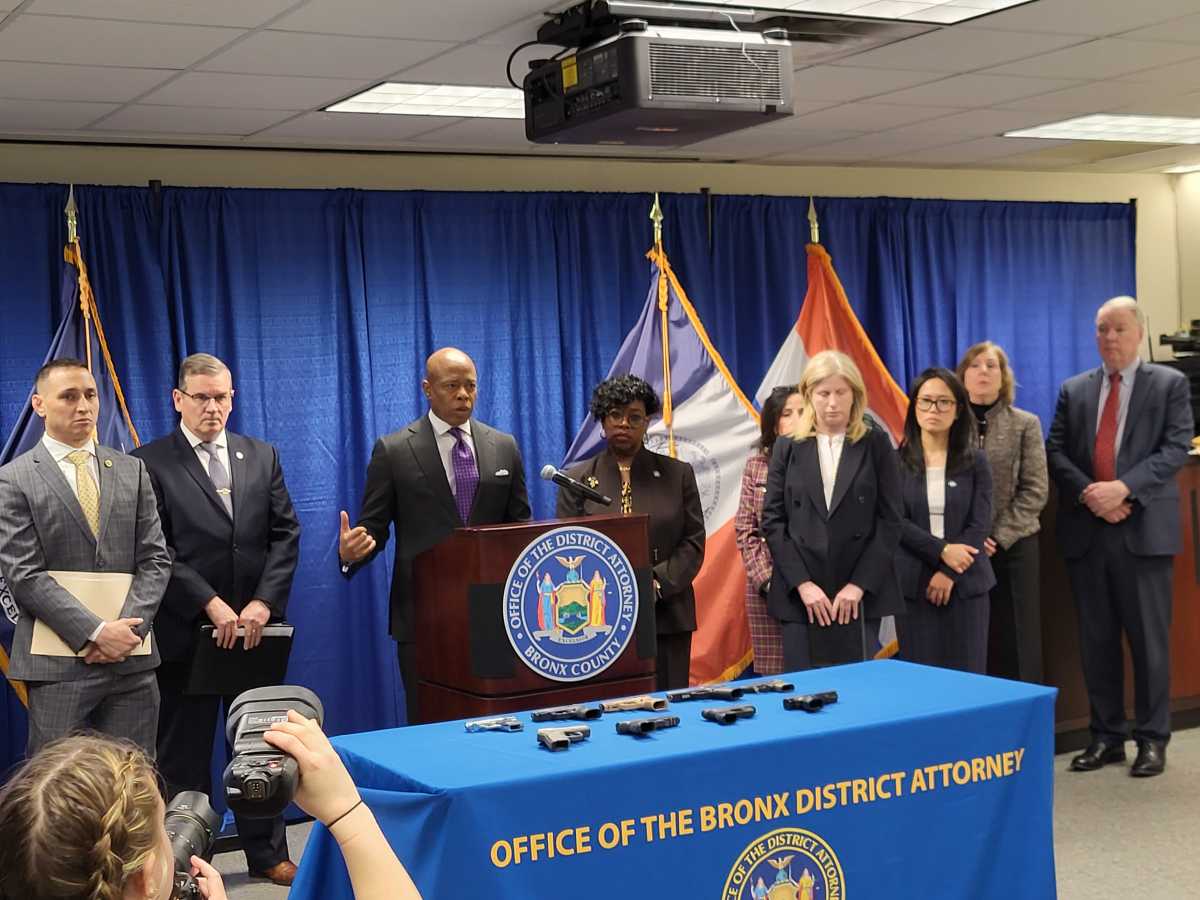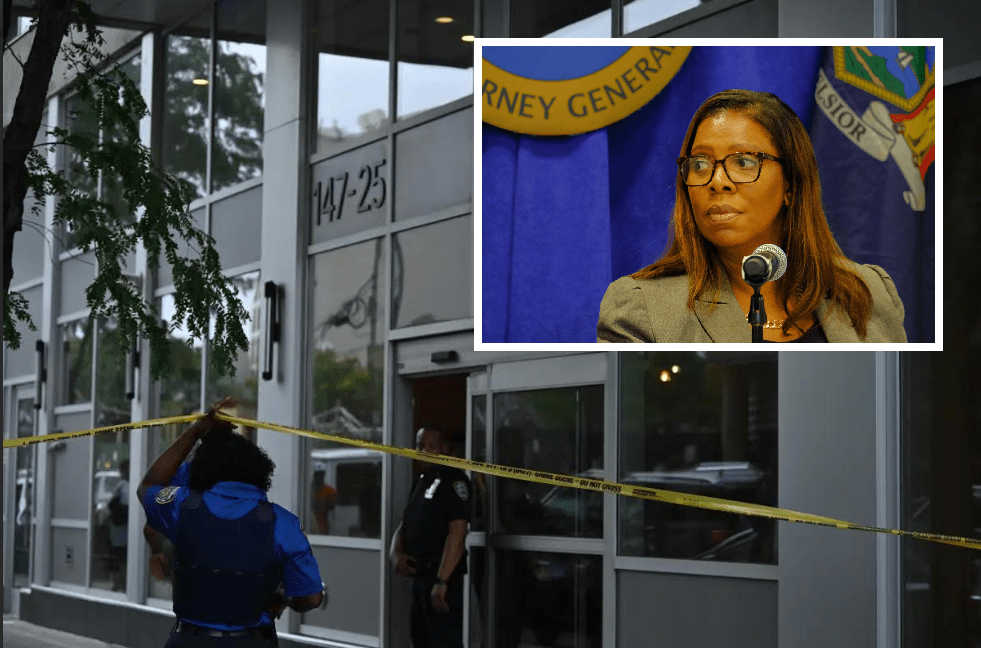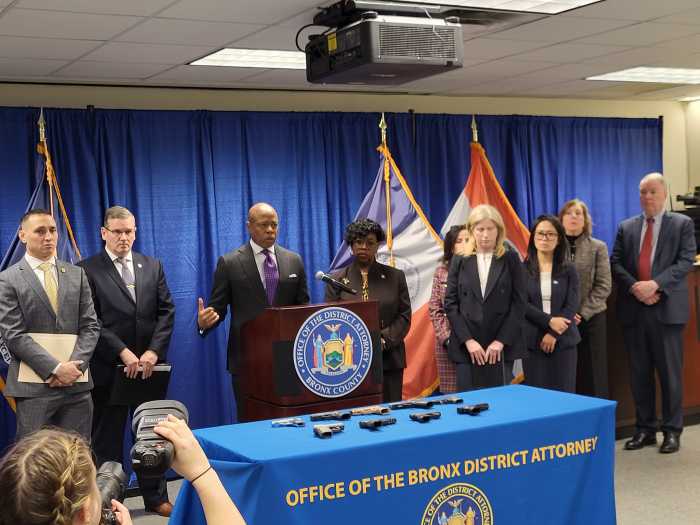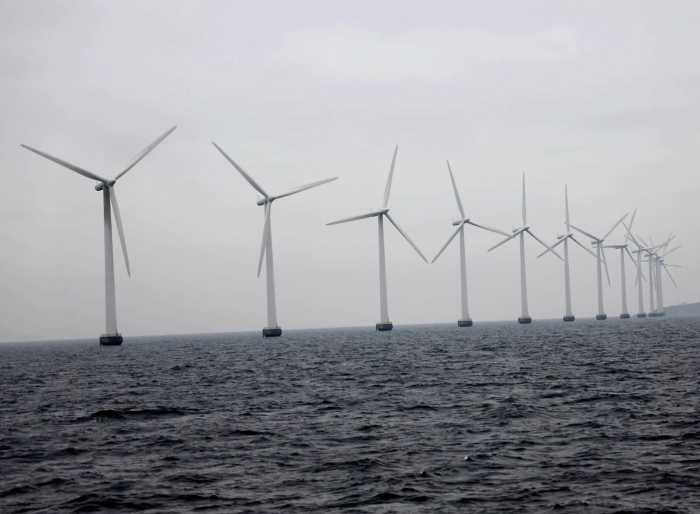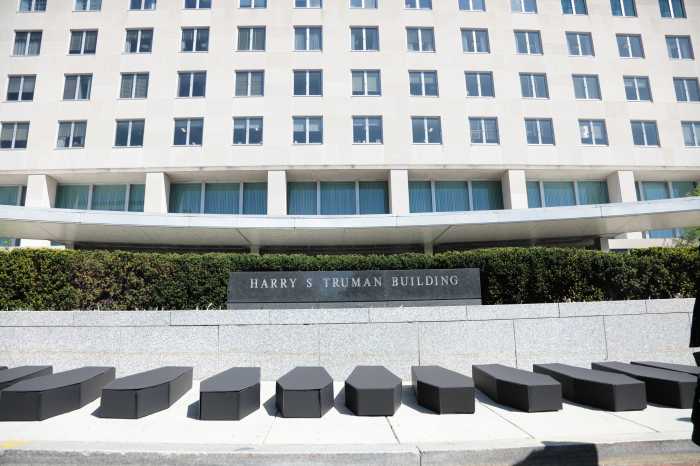The MTA wants to test platform doors at three subway stations in Manhattan and Queens, the agency’s chief Janno Lieber announced Wednesday.
The Metropolitan Transportation Authority will pilot the barriers at Times Square on the 7 line platform, at Third Avenue on the L line, and at Sutphin Boulevard/JFK on the E train, Lieber told NY1.
“We’re going to be piloting both platform doors at three stations where the engineering does work,” the transit leader told the station on Feb. 23.
Lieber did not provide a timeline for the project, but agency working group known as the Track Intrusion Task Force will present more details to the MTA’s full board Thursday, according to MTA spokesperson Tim Minton.
The Times Square screens won’t be where Michelle Go was pushed in front of a train last month, which was on the vast station complex’s southbound R train platform, because an MTA study of every platform found that waiting area to be too narrow.
Lieber convened the task force on Dec. 10 after a “significant increase” of people going onto the tracks, and the panel will also talk about installing sensors and lighting to help stop people from going onto the trackbed.
“We’re also going to be piloting new technologies to detect track incursion using thermal technology, using laser technology, so we can know quicker when people get on the tracks and hopefully, interdict that kind of behavior,” he said.
“It’s a really complicated issue. A lot of people are doing it voluntarily. Sometimes people with mental health issues do it and they don’t understand the dangers and so on,” Lieber added.
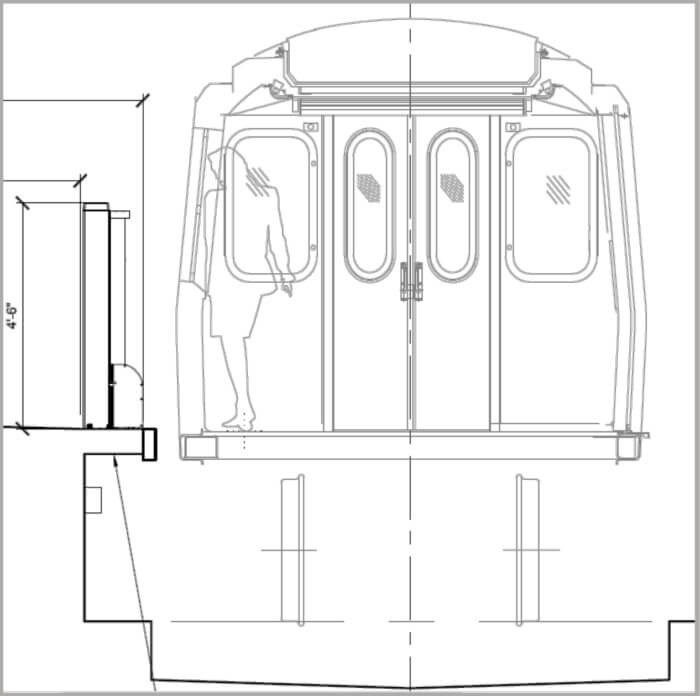
The Authority is also working with the Psychiatry Department at NYU Langone to find out how to deter people from killing themselves by jumping on the track, he said.
In the aftermath of Go’s killing, politicians started pushing the MTA to add the edge gates to its platforms, but Lieber said last month that there were “special complexities” unique to New York’s subway system, like its age, different train car models, pillars in blocking the way, how much extra weight some waiting areas can bear, and conflicts with wheelchair access.
But the transit guru vowed to take another look at it.
“Platform doors are an idea that works in many places, but there’s some special complexities in New York,” Lieber told reporters on Jan. 18. “That said, we’re always looking for ways that we can make the system safer.”
An almost 4,000-page report MTA commissioned the engineering firm STV to do in 2017 and finished in 2019 — but which the agency did not release publicly until last month — looked at the feasibility of doors for every platform across its 472 stations.
The review found that only 128 stations, or about 27%, could accommodate the barriers at a cost of about $7 billion.
The Third Avenue station on the L train line was actually already recommended as a pilot program in the three-year-old report by STV, and the engineering firm wrote at the time it was producing “preliminary construction documents for the design-build of half-height PSDs” at that stop, according to the report.
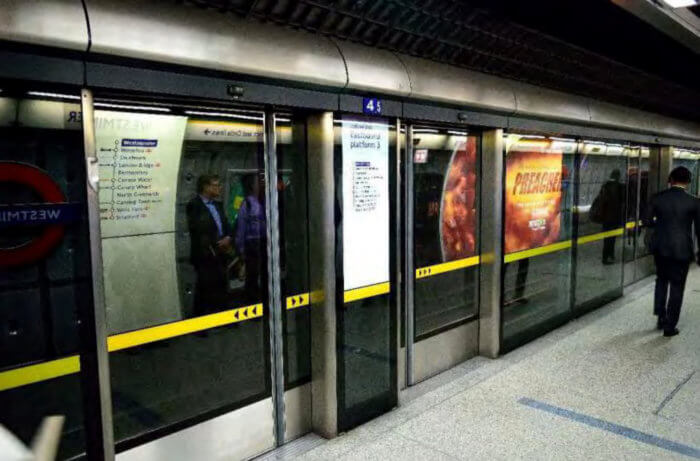
The company looked at building so-called Platform Screen Doors (PSD), which are 8-foot tall glazed barriers, or Automatic Platform Gates (APG), which are around 4-6-foot tall to fit stations that have lower ceilings, can’t bear as much weight, or for better airflow.
The report shows examples for both types of gates on other transit systems overseas, such as the London Underground in the UK and the Paris Métro in France.
For the L train’s Third Avenue stop, APGs would cost some $23.4 million while the taller PSDs would be around $3.8 million more expensive.
The Times Square 7 train platforms could accommodate APGs at $31.4 million and PSDs for $38.8 million, with similar price tags for Sutphin Boulevard on the E line of $31.7 million and $40.6 million, respectively, according to the STV review.
